|
One word for "tree" in ‘ōlelo Hawaiʻi (Hawaiian language) is kumulāʻau. Broken into two words, one translation of this is plant (lāʻau) teacher (kumu). What can these trees teach us?

ʻŌhiʻa Lehua‘Ōhi‘a lehua are the most abundant of Hawaiian native trees and perhaps the most iconic. Their bright red blossoms have come to symbolize native species. The trees are specially adapted to thrive in a volcanic landscape like the island of Hawaiʻi. They are one of the first plants to colonize new lava flows and possess stomata (pores in leaves that allow plants to breathe) that will close up in the presence of harmful gases, when many non-native trees will struggle or die back. In Native Hawaiian tradition, ʻōhiʻa are heavily associated with the volcanic deity Pele. 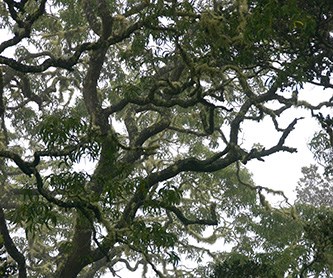
KoaSizable tracts of koa forest can be found in the Mauna Loa section of the park, where they have been largely safeguarded from grazing ungulates and logging. In some of these areas, the trees can approach 100 feet (30m) in height. The leaves of koa change uniquely and dramatically as the tree develops. Younger koa trees have divided leaves with a fringe-like appearance. As the tree ages, the leaves become large, sleek and sickle-shaped. As a keystone species in certain ecosystems, koa are critical to many endemic insects in particular. Historically, koa were especially prized for use in the wooden hulls of canoes. This dark wood is still highly valued today.
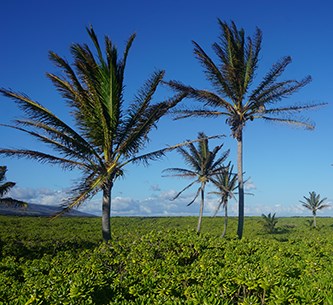
Niu (Coconut Palm)One could be forgiven for thinking that this tree, heavily intertwined with Hawaiʻi in the popular imagination, is native. In truth, the coconut palm was likely a "canoe plant" brought by some of the first migrants from Polynesia. Since its first introduction in the islands, the tree has thrived and can now be found in coastal areas of the park. 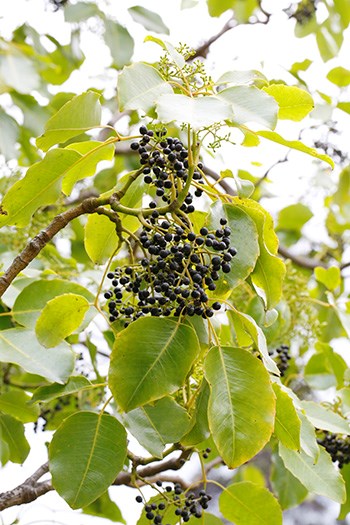
ʻŌlapaBecause its tiny saplings on the forest floor are particularly appetizing to grazing ungulates such as feral pigs, ʻŌlapa is most often found in areas of forest that are fenced in or protected from these invasive animals. The tree's flowers develop into small dark blue or brown fruits, a food for species of Hawaiian honeycreepers like ʻōmaʻo and the now extinct ʻōʻō. Native Hawaiians traditionally use this fruit and the bark of the tree to create dark-colored dyes.ʻŌlapa is also a term used for Hawaiian hula dancers, as their movements may resemble the quaking leaves of the ʻōlapa tree. Look for this characteristic fluttering when you encounter it, most easily found along the park's eastern boundary and near Nāhuku (Thurston Lava Tube). 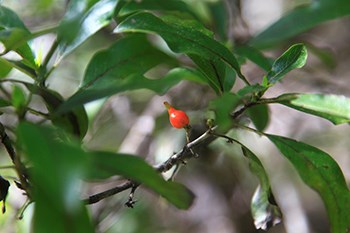
PiloAt least five species of this important rainforest plant are found in the national park. Pilo has long, 1-4 inch (3-10 cm) leaves that grow in opposite pairs. Female pilo flowers develop red or orange fruits. As with ʻōlapa, these fruits are a popular food for the ʻōmao. 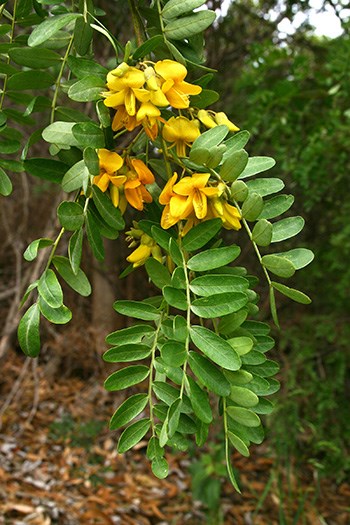
MāmaneThis endemic tree is not the dominant species in any areas within the national park, but is critical elsewhere on the island of Hawaiʻi. Within the national park, look for them in the forests along Mauna Loa Road. The compound leaves of māmane are made up of many ovular leaflets. When blooming, it is adorned with distinctive bright yellow flowers that support native birds like the palila, ʻiʻiwi, and ʻapapane. It is also one of the most fire-resistant native trees. 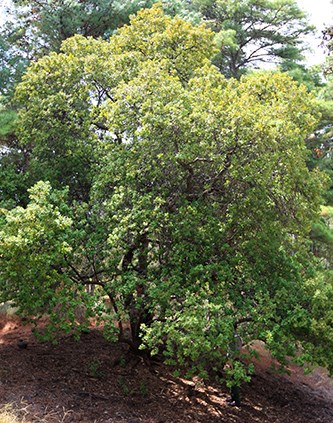
ʻIliahi (Sandalwood)Of the four species of sandalwood found throughout the Hawaiian islands, only one (Santalum paniculatum) is found in Hawaiʻi Volcanoes National Park. Most of these once plentiful native trees in the Hawaiian islands were logged for their valuable, famously fragrant wood in the first part of the 19th century. For a brief time the prized wood was a chief export of the Kingdom of Hawaiʻi, but the boom was short-lived due to overexploitation. ʻIliahi can often be spotted in the forest by their yellow-ish, light green leaves, which stand out in contrast to the darker leaves of trees like ʻōhiʻa. 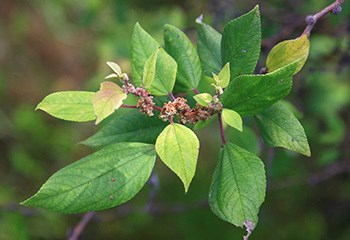
MāmakiThis small tree, sometimes listed as a shrub, is a member of the nettle family. The plant and its Hawaiian brethren lost their nettles after they arrived in the islands, where there were no predators to defend from. Leaves may have short white or gray hairs and have highly visible veins. These leaves historically were dried and used in medicinal tea by Native Hawaiians, a practice that has seen a popular revival in recent years. The plant was also notable as a significant source of fiber for kapa cloth. |
Last updated: February 18, 2021

